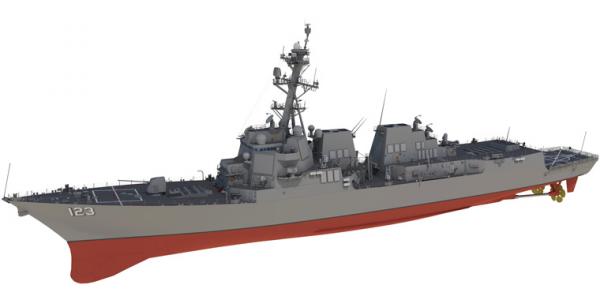Proceedings, Jan. 2013
The Arleigh Burke–class guided-missile destroyers are the backbone of the Fleet. For the past 20 years, the DDG-51s have evolved to meet the latest threats. Originally designed to combat Soviet aircraft and submarines, the Burkes proved their versatility and flexibility in two Persian Gulf wars and cemented the Navy’s role in ballistic-missile defense (BMD).

With a lot of life remaining in the latest Flight IIA design and the advanced Flight III variant on the drawing board, it is clear the DDG-51s will be the surface warships for the Navy in the 21st century. The Flight IIA can grow to 10,000 tons full-load displacement, an addition of some 700 tons, without compromising stability and seaworthiness. It features the ninth generation of the Aegis weapon system—which has been the heart of the Navy’s surface forces since the cruiser USS Ticonderoga (CG-47) was commissioned in January 1983. New open-architecture combat systems and sensors are bringing increased capabilities and flexibility to in-service and future DDGs.
With the Flight III design studies still under way, it is too soon to guess at size and cost, but affordability is clearly a top-level requirement. Given the looming constrained fiscal environment, a compelling case can be made for the cost-effectiveness of the Flight III. This design will build on existing DDG-51 programs and infrastructure at the lowest risk. It also will offer the greatest potential for keeping pace with anticipated threats and deliver multimission warfighting capabilities that benefit both in-service modernization and new ship construction.




